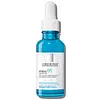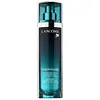What's inside
What's inside
 Key Ingredients
Key Ingredients

 Benefits
Benefits

 Concerns
Concerns

 Ingredients Side-by-side
Ingredients Side-by-side

Water
Skin ConditioningGlycerin
HumectantAlcohol Denat.
AntimicrobialPropylene Glycol
HumectantPanthenol
Skin ConditioningPentylene Glycol
Skin ConditioningDimethicone
EmollientPEG-6 Caprylic/Capric Glycerides
EmulsifyingPPG-6-Decyltetradeceth-30
EmulsifyingGlyceryl Isostearate
EmollientMadecassoside
AntioxidantSodium Hyaluronate
HumectantAmmonium Polyacryloyldimethyl Taurate
Emulsion StabilisingDisodium EDTA
Hydrolyzed Hyaluronic Acid
HumectantCaprylyl Glycol
EmollientCitric Acid
BufferingXanthan Gum
EmulsifyingButylene Glycol
HumectantTocopherol
AntioxidantPhenoxyethanol
PreservativeParfum
MaskingWater, Glycerin, Alcohol Denat., Propylene Glycol, Panthenol, Pentylene Glycol, Dimethicone, PEG-6 Caprylic/Capric Glycerides, PPG-6-Decyltetradeceth-30, Glyceryl Isostearate, Madecassoside, Sodium Hyaluronate, Ammonium Polyacryloyldimethyl Taurate, Disodium EDTA, Hydrolyzed Hyaluronic Acid, Caprylyl Glycol, Citric Acid, Xanthan Gum, Butylene Glycol, Tocopherol, Phenoxyethanol, Parfum
Water
Skin ConditioningCyclohexasiloxane
EmollientGlycerin
HumectantAlcohol Denat.
AntimicrobialSodium Tetrahydrojasmonate
AbrasivePolysilicone-11
Octyldodecanol
EmollientHdi/Trimethylol Hexyllactone Crosspolymer
Dipropylene Glycol
HumectantBis-PEG/PPG-16/16 PEG/PPG-16/16 Dimethicone
EmollientCI 77891
Cosmetic ColorantMica
Cosmetic ColorantSecale Cereale Seed Extract
AbrasiveSodium Hyaluronate
HumectantHydroxyethylcellulose
Emulsion StabilisingPhenoxyethanol
PreservativeAdenosine
Skin ConditioningPoloxamer 338
EmulsifyingAmmonium Polyacryloyldimethyl Taurate
Emulsion StabilisingDimethicone
EmollientDimethiconol
EmollientPentylene Glycol
Skin ConditioningCaprylic/Capric Triglyceride
MaskingDisodium EDTA
Methyldihydrojasmonate
MaskingCitronellol
PerfumingInulin Lauryl Carbamate
Emulsion StabilisingParfum
MaskingWater, Cyclohexasiloxane, Glycerin, Alcohol Denat., Sodium Tetrahydrojasmonate, Polysilicone-11, Octyldodecanol, Hdi/Trimethylol Hexyllactone Crosspolymer, Dipropylene Glycol, Bis-PEG/PPG-16/16 PEG/PPG-16/16 Dimethicone, CI 77891, Mica, Secale Cereale Seed Extract, Sodium Hyaluronate, Hydroxyethylcellulose, Phenoxyethanol, Adenosine, Poloxamer 338, Ammonium Polyacryloyldimethyl Taurate, Dimethicone, Dimethiconol, Pentylene Glycol, Caprylic/Capric Triglyceride, Disodium EDTA, Methyldihydrojasmonate, Citronellol, Inulin Lauryl Carbamate, Parfum
 Reviews
Reviews

Ingredients Explained
These ingredients are found in both products.
Ingredients higher up in an ingredient list are typically present in a larger amount.
Alcohol Denat. is an alcohol with a denaturant property. It is created by mixing ethanol with other additives.
This ingredient gets a bad rep because it is irritating and drying - mostly due to its astringent property. Astringents draw out natural oils in tissue, constricting pores and leaving your skin dried out.
However, alcohol denat. is not all that bad.
Due to its low molecular weight, alcohol denat. tends to evaporate quickly. One study on pig skin found half of applied alcohol evaporated in 10 seconds and less than 3% stayed on skin.
This also helps other ingredients become better absorbed upon application.
Studies are conflicted about whether this ingredient causes skin dehydration. One study from 2005 found adding emollients to propanol-based sanitizer decreased skin dryness and irritation. Another study found irritation only occurs if your skin is already damaged.
Small amounts of alcohol are generally tolerated by oily skin or people who live in humid environments.
The rule of thumb is if this alcohol is near the end of an ingredients list, it will probably not affect your skin much.
Also...
This ingredient has antimicrobial and solvent properties.
The antimicrobial property helps preserve products and increase their shelf life. As a solvent, it helps dissolve other ingredients.
Other types of astringent alcohols include:
Learn more about Alcohol Denat.Ammonium Polyacryloyldimethyl Taurate is a polymer made from ammonium salts. It helps add stability and texture to a product. This ingredient is stable over a wide pH range.
Due to its ability to absorb water, it can help thicken the texture of a product. As an emulsion stabilizer, this ingredient is stabilizes other ingredients to create a consistent texture.
According to a manufacturer, it helps create a "smooth, light and fresh" texture.
Learn more about Ammonium Polyacryloyldimethyl TaurateDimethicone is a type of synthetic silicone created from natural materials such as quartz.
What it does:
Dimethicone comes in different viscosities:
Depending on the viscosity, dimethicone has different properties.
Ingredients lists don't always show which type is used, so we recommend reaching out to the brand if you have questions about the viscosity.
This ingredient is unlikely to cause irritation because it does not get absorbed into skin. However, people with silicone allergies should be careful about using this ingredient.
Note: Dimethicone may contribute to pilling. This is because it is not oil or water soluble, so pilling may occur when layered with products. When mixed with heavy oils in a formula, the outcome is also quite greasy.
Learn more about DimethiconeDisodium EDTA plays a role in making products more stable by aiding other preservatives.
It is a chelating agent, meaning it neutralizes metal ions that may be found in a product.
Disodium EDTA is a salt of edetic acid and is found to be safe in cosmetic ingredients.
Learn more about Disodium EDTAGlycerin is already naturally found in your skin. It helps moisturize and protect your skin.
A study from 2016 found glycerin to be more effective as a humectant than AHAs and hyaluronic acid.
As a humectant, it helps the skin stay hydrated by pulling moisture to your skin. The low molecular weight of glycerin allows it to pull moisture into the deeper layers of your skin.
Hydrated skin improves your skin barrier; Your skin barrier helps protect against irritants and bacteria.
Glycerin has also been found to have antimicrobial and antiviral properties. Due to these properties, glycerin is often used in wound and burn treatments.
In cosmetics, glycerin is usually derived from plants such as soybean or palm. However, it can also be sourced from animals, such as tallow or animal fat.
This ingredient is organic, colorless, odorless, and non-toxic.
Glycerin is the name for this ingredient in American English. British English uses Glycerol/Glycerine.
Learn more about GlycerinParfum is a catch-all term for an ingredient or more that is used to give a scent to products.
Also called "fragrance", this ingredient can be a blend of hundreds of chemicals or plant oils. This means every product with "fragrance" or "parfum" in the ingredients list is a different mixture.
For instance, Habanolide is a proprietary trade name for a specific aroma chemical. When used as a fragrance ingredient in cosmetics, most aroma chemicals fall under the broad labeling category of “FRAGRANCE” or “PARFUM” according to EU and US regulations.
The term 'parfum' or 'fragrance' is not regulated in many countries. In many cases, it is up to the brand to define this term.
For instance, many brands choose to label themselves as "fragrance-free" because they are not using synthetic fragrances. However, their products may still contain ingredients such as essential oils that are considered a fragrance by INCI standards.
One example is Calendula flower extract. Calendula is an essential oil that still imparts a scent or 'fragrance'.
Depending on the blend, the ingredients in the mixture can cause allergies and sensitivities on the skin. Some ingredients that are known EU allergens include linalool and citronellol.
Parfum can also be used to mask or cover an unpleasant scent.
The bottom line is: not all fragrances/parfum/ingredients are created equally. If you are worried about fragrances, we recommend taking a closer look at an ingredient. And of course, we always recommend speaking with a professional.
Learn more about ParfumPentylene glycol is typically used within a product to thicken it. It also adds a smooth, soft, and moisturizing feel to the product. It is naturally found in plants such as sugar beets.
The hydrophilic trait of Pentylene Glycol makes it a humectant. As a humectant, Pentylene Glycol helps draw moisture from the air to your skin. This can help keep your skin hydrated.
This property also makes Pentylene Glycol a great texture enhancer. It can also help thicken or stabilize a product.
Pentylene Glycol also acts as a mild preservative and helps to keep a product microbe-free.
Some people may experience mild eye and skin irritation from Pentylene Glycol. We always recommend speaking with a professional about using this ingredient in your routine.
Pentylene Glycol has a low molecular weight and is part of the 1,2-glycol family.
Learn more about Pentylene GlycolPhenoxyethanol is a preservative that has germicide, antimicrobial, and aromatic properties. Studies show that phenoxyethanol can prevent microbial growth. By itself, it has a scent that is similar to that of a rose.
It's often used in formulations along with Caprylyl Glycol to preserve the shelf life of products.
Sodium Hyaluronate is hyaluronic acid's salt form. It is commonly derived from the sodium salt of hyaluronic acid.
Like hyaluronic acid, it is great at holding water and acts as a humectant. This makes it a great skin hydrating ingredient.
Sodium Hyaluronate is naturally occurring in our bodies and is mostly found in eye fluid and joints.
These are some other common types of Hyaluronic Acid:
Learn more about Sodium HyaluronateWater. It's the most common cosmetic ingredient of all. You'll usually see it at the top of ingredient lists, meaning that it makes up the largest part of the product.
So why is it so popular? Water most often acts as a solvent - this means that it helps dissolve other ingredients into the formulation.
You'll also recognize water as that liquid we all need to stay alive. If you see this, drink a glass of water. Stay hydrated!
Learn more about Water